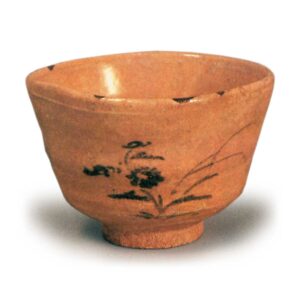
In 1700, a court case broke out between the Shiinomine potters of Hizen Province (Saga Prefecture) and Imari merchants, and the potters involved in the case were expelled. The few remaining potters could no longer fire once a year at the large kiln for the domain’s official use, so the Karatsu domain kiln was built the following year. In 1707, Tarouemon Nakazato IV and Yajibei Oshima IV built a tea bowl kiln in Bozu-machi, Karatsu, under orders from the domain, and moved from Shiinomine in the following year, and for the next 26 The following year, he moved from Shiinomine, and for the next twenty-six years, he fired the domain’s official wares. In 1734, Kiheiji Nakazato V and Yakichi Oshima V moved the kiln to Karajinmachi (Aza-tani-cho, Machida) by order of the domain. This kiln is referred to by the locals as the “tea bowl kiln. After the abolition of the domain, the Oshima family left the pottery business, and this kiln was managed by the Nakazato family for generations. Tarouemon XII used the kiln until around 1920 (Taisho 9), and today, a remnant of those days remains in a corner of Nakazato Tofusa. The local people refer to the bowls fired in the tea bowl kiln as “Dedication Karatsu. The style is completely different from that of Ko-karatsu, being in the porcelain style, and painted by a professional painter. The products include tea ceremony utensils such as matcha bowls, water jars, flower vases, and mukozuke, as well as rice bowls, large bowls, and tokonoki. Among them, white inlays on blue ground, black inlays on white ground, and underglaze blue and white inlays are the most famous.



